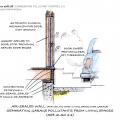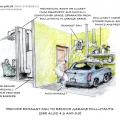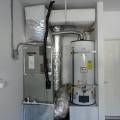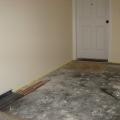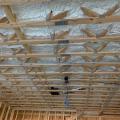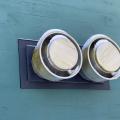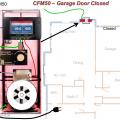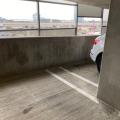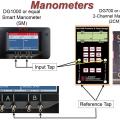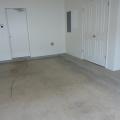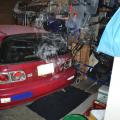Showing results 1 - 20 of 20
Equipment needed to pressure test the airtightness of walls separating the house from an attached garage
Incorporating vestibules to separate the garage from interior occupied space can reduce the transfer of contaminants.
Install a self-closing door with weatherstripping and thoroughly air-seal the shared house-garage walls to help keep automobile exhaust and other pollutants out of the home.
Installing a garage exhaust fan is one important step in keeping auto exhaust and other pollutants out of the home
It is not recommended to install HVAC systems in enclosed attached garages. However, when HVAC systems are installed in enclosed garages, they must comply with ASHRAE 62.2 duct leakage thresholds.
Mechanical exhaust is not required in this shared parking garage in a multistory multifamily building because the garage is not enclosed and can rely on natural air changes to reduce airborne contaminant concentration.
Right - Air-sealing the wall between the garage and the home is vital for occupant health and safety.
Right - The ceiling above the garage is insulated and air-sealed with open-cell spray foam to keep garage fumes out of the living space above.
Right - This enclosed parking garage in a multistory multifamily building is equipped with mechanical exhaust to remove airborne contaminants from the garage.
Right - This shared enclosed parking garage is equipped with exhaust fans to remove airborne contaminants from the garage.
The air tightness of the garage-to-house air barrier can be tested with a blower door kit and two manometers
The air tightness of the house-garage air barrier can be tested using a CFM50 test that is first run with the garage door to outdoors closed
The air tightness of the house-garage air barrier can be tested using a CFM50 test that is run first with the garage door to outdoors closed and then with the overhead garage door to outdoors open
These garages attached to multifamily townhouses are open to the exterior, allowing for natural air changes to remove airborne contaminants from the garage.
This shared parking garage in a multistory multifamily building is open to the exterior, allowing for natural air changes to control airborne contaminant concentration.
To test house-to-garage airtightness, after connecting the green tubing as shown, connect the red tubing as follows: connect the input tap on channel “A” of the two-channel manometer (2CM) to the reference tap on channel “B” of the 2CM
To test house-to-garage airtightness, first set up the blower door kit with the smart manometer in the blower door
Two manometers are used when pressure testing the airtightness of the walls separating the house from an attached garage
When HVAC systems are installed in enclosed garages, it is preferable that the equipment is located within an air-sealed room that is connected to the conditioned space.
Wrong – Cars should never be left running in a closed garage. Air seal walls, install a garage fan, and inform home owners of the dangers of running a vehicle with the garage door shut


